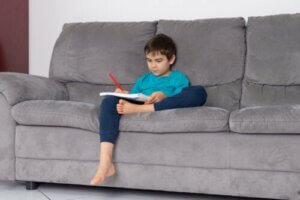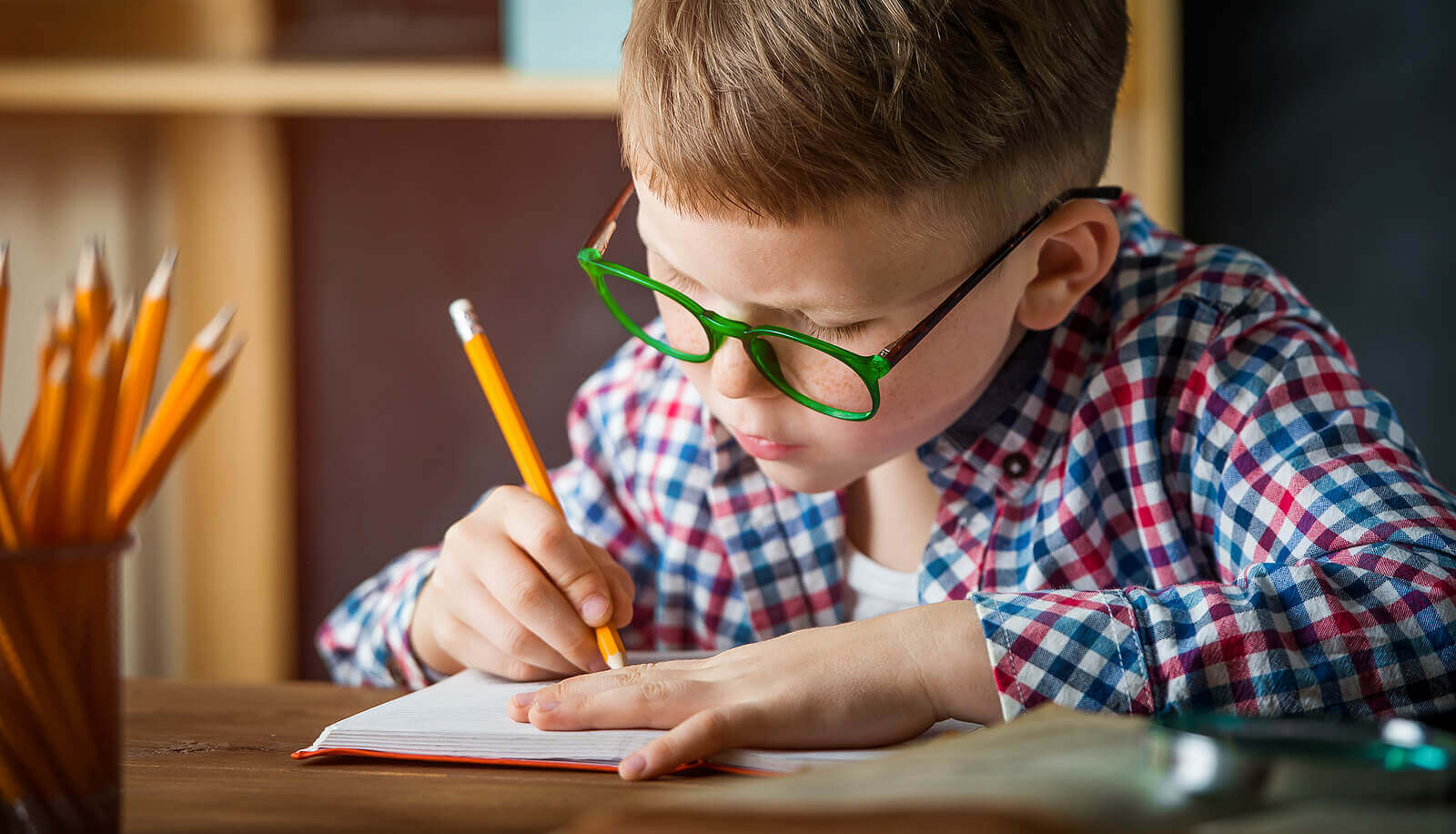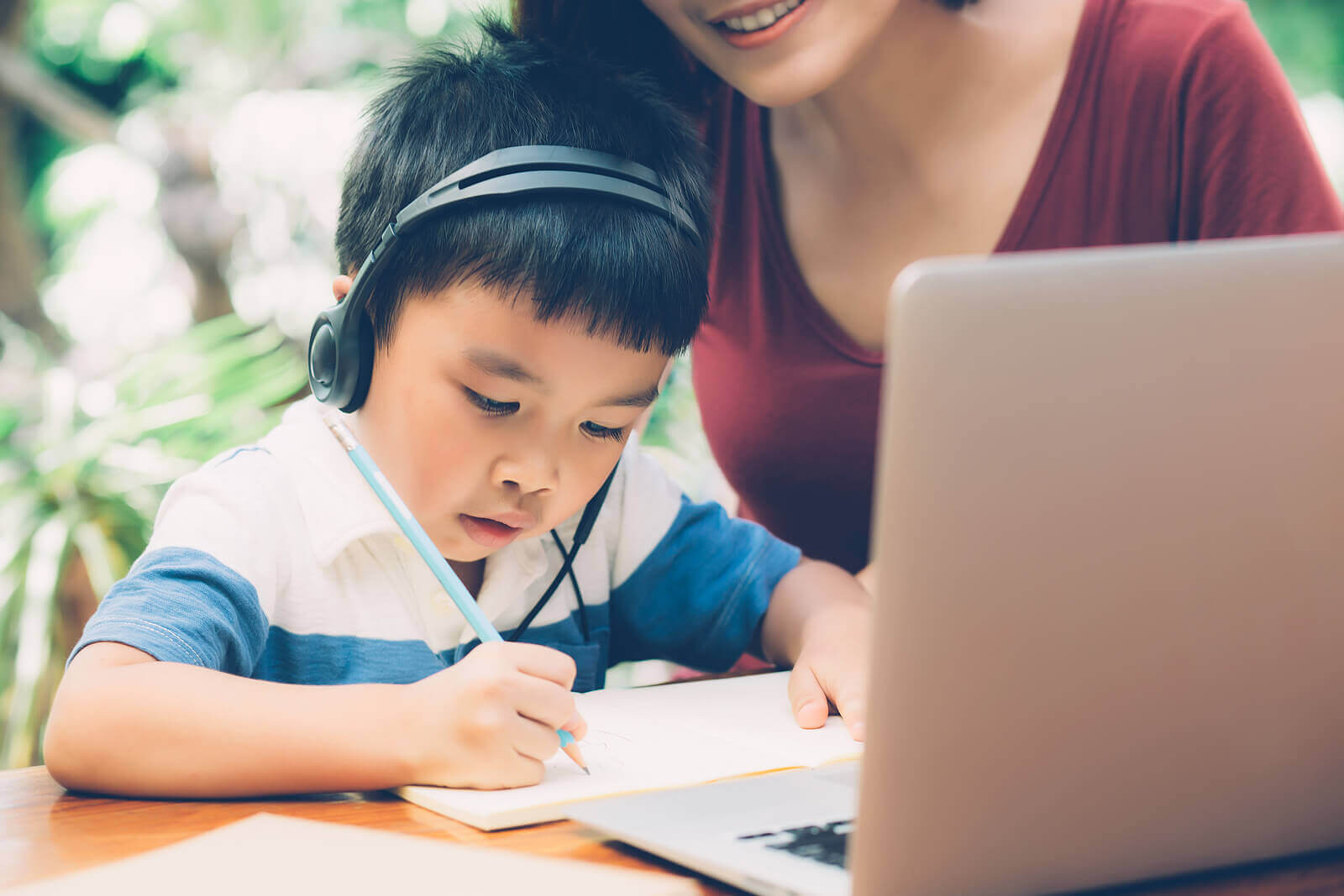The "Happy List" to Teach Children to Value Simple Things


Written and verified by the psychologist Mara Amor López
Today, children are used to receiving many gifts that make them feel happy, but that happiness is fleeting. Very soon after receiving them, they wish for new ones and stop loving the ones they had. The “happy list” is a method that helps children to value the simple things in life and obtain more long-lasting happiness.
You’ll agree with me that children are surrounded by thousands of wonderful things in their lives, which aren’t material goods. These things can make them very happy, even if children don’t take them into account.
That’s why we, as parents, must teach them to appreciate those little things that can make us very happy. But how can we make our children appreciate the simple things? With the “happy list” technique.
What is the “happy list”?
Sure, if we ask our children what makes them happy, their initial response will probably have to do with something material. But, if we keep digging and let them think, they’ll find simple things from their day-to-day that make them happy as well – things that take place from the time they start their day until the time they go to bed.

So, we can ask our children to make a “happy list.” This will be very rewarding and allow them to discover that there are many things around them that can make them immensely happy. In fact, they’re even more fun and significant than simple material items. And while we’re at it, why don’t we parents make our “happy list” too?
The good thing about this technique is that we can add things to our list as they come to mind. At the same time, we can dedicate one day a week to updating each other’s list and thus contribute to the happiness of the whole family.
How can we make a “happy list”?
Here’s an example of what a “happy list” can look like, but you can adapt it, and add or remove things… Everyone can make their list according to their own tastes and preferences.
First of all, ask yourself the question: “What makes me happy?” Or, if we want our child to make a “happy list”: “What makes you happy?”
Outside the home
- Going to the country to spend the day with the family.
- Enjoying a sunrise on the beach.
- Watching the rain fall on a rainy day.
- Playing with my dog.
- Going to the park and playing with my friends.
- Lying in the country or on the beach and watching the stars, especially in summer.
- Watching the funny shapes of some clouds.
- Walking barefoot on the sand at the beach.
- Listening to and watching birds fly.
At home
- Taking a hot bath with my favorite bath toys.
- Hugging my stuffed animals.
- Enjoying the warmth of my bed on a bad day.
- Enjoying water and light (many children don’t have these comforts).
With the family
- Eating my favorite food, which mom makes so delicious.
- Listening to the stories and tales my parents or grandparents tell me.
- Making popcorn and watching a movie as a family.
- Playing with mom and dad.
- Enjoying an afternoon of board games as a family.
Individual
- Making a puzzle or jigsaw puzzle.
- Dancing.
- Drawing and coloring a picture that I like.
- Reading one of my favorite stories.
- Making figures with play dough or clay.
- Listening to my favorite songs.
- Organizing my toys by color or category.
- Eating ice cream.
This list is endless and is only an example, because you can add things, change them for others, etc. Every day we can discover new simple things that make us feel good. So, let’s all get going and make our “happy list.”

What are the benefits of the “happy list” technique?
- This technique helps not only children, but also youth and adults to begin to see and appreciate those things that cause them joy, well-being, satisfaction, calm or any other positive feeling that makes them feel good.
- It also helps children get to know themselves better, discover their individual tastes, and thus increase their self-esteem and confidence.
- This strategy is also very useful when children feel sad, angry or frustrated. The list makes them aware of options to make them feel better at those times.
- Appreciating the simple things that make us feel good makes us more human. With these things, we’re teaching children to be grateful, less materialistic, simpler, more generous, less selfish, and more compassionate.
In short, now that you know how useful it is and all the benefits that “the happy list” has, it’s time to put it into practice and discover all the wonderful things that life can offer us, without having to resort to material things.
What are you waiting for to put this strategy into action? Both children and parents will benefit greatly from it.
Today, children are used to receiving many gifts that make them feel happy, but that happiness is fleeting. Very soon after receiving them, they wish for new ones and stop loving the ones they had. The “happy list” is a method that helps children to value the simple things in life and obtain more long-lasting happiness.
You’ll agree with me that children are surrounded by thousands of wonderful things in their lives, which aren’t material goods. These things can make them very happy, even if children don’t take them into account.
That’s why we, as parents, must teach them to appreciate those little things that can make us very happy. But how can we make our children appreciate the simple things? With the “happy list” technique.
What is the “happy list”?
Sure, if we ask our children what makes them happy, their initial response will probably have to do with something material. But, if we keep digging and let them think, they’ll find simple things from their day-to-day that make them happy as well – things that take place from the time they start their day until the time they go to bed.

So, we can ask our children to make a “happy list.” This will be very rewarding and allow them to discover that there are many things around them that can make them immensely happy. In fact, they’re even more fun and significant than simple material items. And while we’re at it, why don’t we parents make our “happy list” too?
The good thing about this technique is that we can add things to our list as they come to mind. At the same time, we can dedicate one day a week to updating each other’s list and thus contribute to the happiness of the whole family.
How can we make a “happy list”?
Here’s an example of what a “happy list” can look like, but you can adapt it, and add or remove things… Everyone can make their list according to their own tastes and preferences.
First of all, ask yourself the question: “What makes me happy?” Or, if we want our child to make a “happy list”: “What makes you happy?”
Outside the home
- Going to the country to spend the day with the family.
- Enjoying a sunrise on the beach.
- Watching the rain fall on a rainy day.
- Playing with my dog.
- Going to the park and playing with my friends.
- Lying in the country or on the beach and watching the stars, especially in summer.
- Watching the funny shapes of some clouds.
- Walking barefoot on the sand at the beach.
- Listening to and watching birds fly.
At home
- Taking a hot bath with my favorite bath toys.
- Hugging my stuffed animals.
- Enjoying the warmth of my bed on a bad day.
- Enjoying water and light (many children don’t have these comforts).
With the family
- Eating my favorite food, which mom makes so delicious.
- Listening to the stories and tales my parents or grandparents tell me.
- Making popcorn and watching a movie as a family.
- Playing with mom and dad.
- Enjoying an afternoon of board games as a family.
Individual
- Making a puzzle or jigsaw puzzle.
- Dancing.
- Drawing and coloring a picture that I like.
- Reading one of my favorite stories.
- Making figures with play dough or clay.
- Listening to my favorite songs.
- Organizing my toys by color or category.
- Eating ice cream.
This list is endless and is only an example, because you can add things, change them for others, etc. Every day we can discover new simple things that make us feel good. So, let’s all get going and make our “happy list.”

What are the benefits of the “happy list” technique?
- This technique helps not only children, but also youth and adults to begin to see and appreciate those things that cause them joy, well-being, satisfaction, calm or any other positive feeling that makes them feel good.
- It also helps children get to know themselves better, discover their individual tastes, and thus increase their self-esteem and confidence.
- This strategy is also very useful when children feel sad, angry or frustrated. The list makes them aware of options to make them feel better at those times.
- Appreciating the simple things that make us feel good makes us more human. With these things, we’re teaching children to be grateful, less materialistic, simpler, more generous, less selfish, and more compassionate.
In short, now that you know how useful it is and all the benefits that “the happy list” has, it’s time to put it into practice and discover all the wonderful things that life can offer us, without having to resort to material things.
What are you waiting for to put this strategy into action? Both children and parents will benefit greatly from it.
This text is provided for informational purposes only and does not replace consultation with a professional. If in doubt, consult your specialist.








